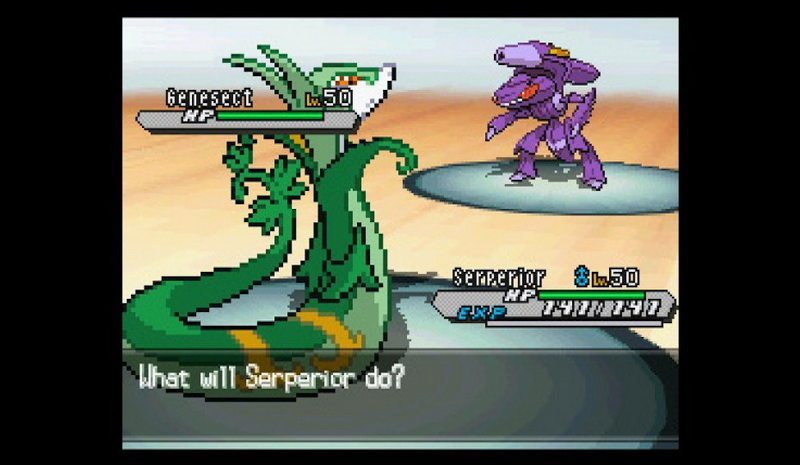If you’re really itching to play a good Pokémon game, check out Joy of Android’s guide on the 6 Best Pokémon Games for Android (Free downloads), so that you can play Pokémon to your heart’s desire. Even on Android!
Beginning when Pokémon Yellow released in Japan in 1998, every new pair of Pokémon games has preceded a third, expansion-like entry. All of them except for Black and White that is. Instead of the predicted Pokémon Gray, these games were followed up with numbered sequels. This unexpected move by Game Freak appears to have created a false impression that Black 2 and White 2 shattered the traditional formula of Pokémon releases. It seemed they were meant to be something more than the run-of-the-mill mid-generation games of the past. When this expectation was betrayed, fans hastily brought out the torches and pitchforks, heckling the games with sharply serrated phrases like “rehashed garbage.” Gamers are free to apply this criticism to Pokémon as a series, and though I would never use such harsh words against Pokémon, I agree with it to some extent. But when a Pokémon fan bashes Black 2 and White 2 in particular with it, it is completely unfounded.
First, aside from the numbers slapped onto the ends of the titles, there was no honest reason to expect these games to be anymore than what Pokémon Gray would have been. The truth is that, due to their nature, Black 2 and White 2 were numbered sequels by necessity. For the first time in Pokémon history, a mid-generation release continued the paired games’ story rather than retelling it with some tweaks. Because of this slight change-up to the formula, Pokémon Grey could not exist. Without spoiling anything, one of the single most important characters in Black and White befriended a different legendary Pokémon depending on which version of the game you played. Game Freak was forced to create two games in order to preserve this difference between versions and avoid an inconsistency. In short, Black 2 and White 2 were Pokémon Gray by a different name.
When you accept that Black 2 and White 2 were, in essence, no different from other mid-generation Pokémon games, it’s easy to see that they far exceeded the status quo. Pokémon Yellow, for instance, didn’t make any notable strides in the core Pokémon formula. It instead featured trivial updates such as slightly altered Pokémon move-sets, new Gym Leader teams, and a couple characters from the anime. Pokémon Crystal was a step in the right direction, however. That game introduced two basic features that are now taken for granted: animated Pokémon sprites, and the option of playing as either a male or female trainer.
Pokémon Emerald focused more on a copious amount of tweaks and refinements alongside just a few new in-game locations. Even the Battle Frontier, probably the game’s most recognized addition, was just an expansion of Ruby’s and Sapphire’s Battle Tower. Pokémon Platinum was fairly similar. Other than the much touted Distortion World (which was only a neat end-game area anyway), Platinum brought improvements to online functionality, the predictable updates and balances, and a second Battle Frontier.
Black 2 and White 2, however, set the bar so high that I doubt even Pokémon Z will be able to reach it. They sported more brand new cities and routes than any other mid-generation Pokémon game as well as Pokéstar Studios, an achievement system with 255 medals to earn, hidden grottoes, the largest regional Pokédex ever, Join Avenue along with the usual refinements and more. These games are also the first and only core series Pokémon games to feature a difficulty setting. They boasted a few great new locations for battling too. My personal favorite, the Pokémon World Tournament, brought Gym Leaders, Elite Four Members, and Champions from every previous generation of Pokémon games into one place. Black 2 and White 2 were enormous games that easily kept me hooked for over 500 hours. I think that speaks volumes about their quality.
When Pokémon fans lash at Black 2 and White 2, calling them “rehashed,” it reeks of hypocrisy. The fact is that these games set a new precedent for mid-generation Pokémon releases with far more additional content than we’ve seen before. Go ahead, accuse Pokémon Yellow of setting a trend for Game Freak to milk each generation of Pokémon for all it’s worth. And I don’t care if you spread the word to every comment section and forum on the internet that Pokémon is a series whose days of being new and exciting are long gone. I’ll just have to agree to disagree. But singling out this particular pair of games from the rest of the series is outright foolish. Just accept that Pokémon is an iterative franchise, and Black 2 and White 2 never had any intention of changing that.
Do you agree with the author’s assertion that calling Pokémon Black 2 & White 2 “rehashed” is absurd? Let us know how you feel in the comment section below!




























































